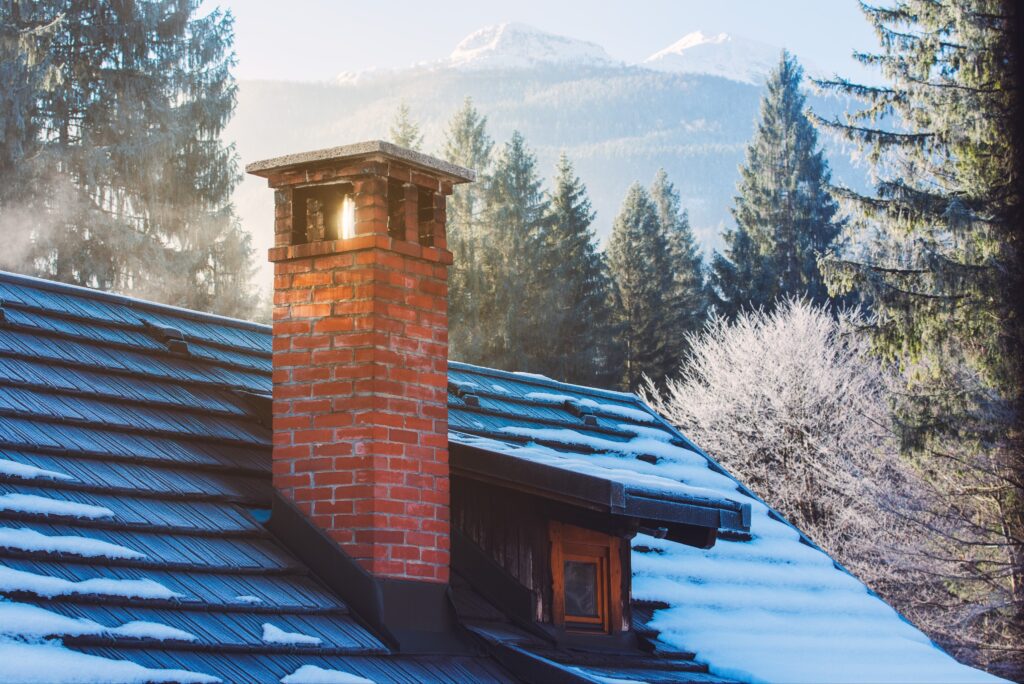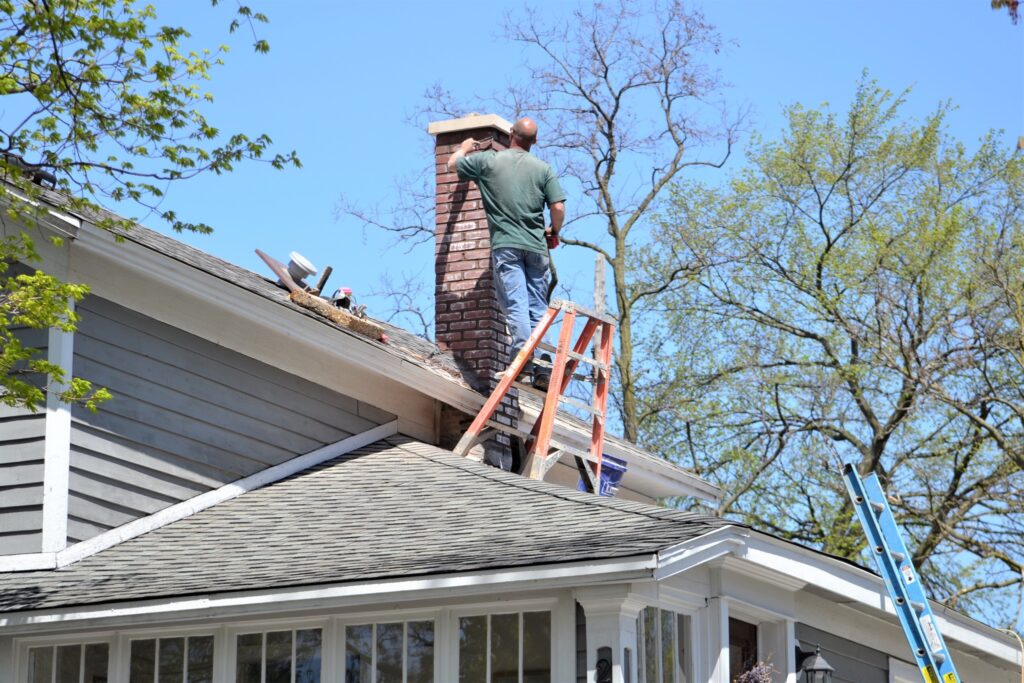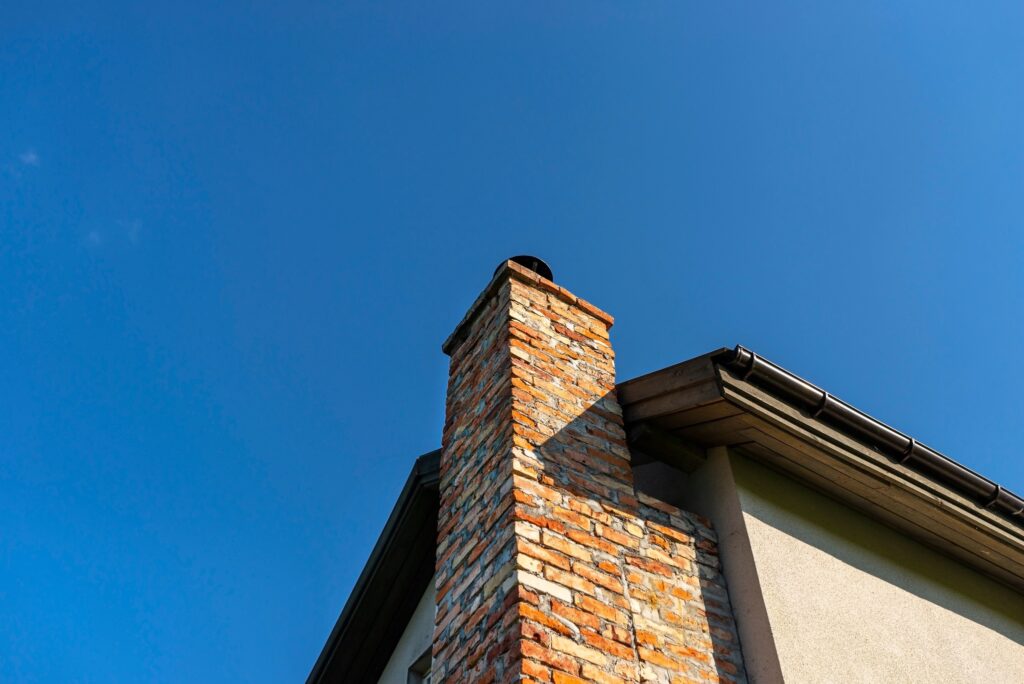Chimney Pointing vs. Rebuilding: Making the Right Decision

A home’s chimney, standing tall against the elements, is not just a functional element but also a symbol of warmth and comfort. However, over time, the wear and tear on a chimney can’t be ignored. When faced with signs of deterioration, homeowners often find themselves at a crossroads, debating between chimney pointing and a complete rebuild. This decision is pivotal, as it not only affects the aesthetics of your home but also its structural integrity and, potentially, your wallet. In this blog post, we’ll delve into the considerations that can help you make the right decision for your chimney—whether to point or to rebuild.
Assessing the Damage: The Starting Point
The first step in making an informed decision is a thorough assessment of your chimney's condition. Cracks, crumbling mortar, and water damage are common signs of wear. If the damage is localized and not extensive, chimney pointing might be a viable solution. Pointing involves repairing and replacing damaged mortar joints without dismantling the entire structure. On the other hand, if the damage is widespread, affecting multiple bricks or compromising the chimney's structural stability, rebuilding might be the only viable option. Signs such as leaning or tilting, extensive mortar deterioration, or loose bricks should be red flags prompting serious consideration of a rebuild.
Chimney Pointing: A Cost-Effective Solution
Chimney pointing is often seen as a cost-effective alternative to a complete rebuild. By addressing specific areas of damage, pointing can extend the life of your chimney without the expense of tearing it down and starting anew. It involves removing deteriorated mortar and replacing it with fresh mortar, restoring the structural integrity and appearance of the chimney. One of the primary advantages of chimney pointing is its relatively lower cost compared to rebuilding. The labor involved is generally less intensive, and the materials required are primarily mortar and perhaps some replacement bricks. This makes it an attractive option for homeowners looking to address localized damage without breaking the bank.
Considerations for Chimney Pointing: When Is It Suitable?
Chimney pointing is most suitable when the damage is not extensive, and the structural integrity of the chimney is still intact. It's a viable option for addressing issues like minor cracks, mortar erosion, or isolated damage due to weathering. Additionally, if your chimney has a historical or aesthetic value that you want to preserve, pointing can be a more targeted approach, allowing you to maintain the original character of the structure. However, it's crucial to note that chimney pointing is not a one-size-fits-all solution. The success of pointing depends on the thoroughness of the assessment, the skill of the mason, and the quality of the materials used. If any of these elements are compromised, it could lead to recurring issues, and the cost-effectiveness of pointing might diminish over time.

Rebuilding: A Fresh Start for Your Chimney
While chimney pointing offers a targeted solution, there are scenarios where rebuilding becomes a necessity. If the structural integrity of your chimney is compromised, attempting to patch it up with pointing could be like putting a band-aid on a broken bone. Rebuilding provides a fresh start, addressing underlying issues and ensuring the long-term stability of the structure. Rebuilding is particularly advisable in the following situations:
Extensive Damage
When a significant portion of the chimney is damaged or deteriorated, pointing may become impractical. Rebuilding allows for a comprehensive solution, ensuring that all compromised elements are replaced.
Structural Instability
If your chimney is leaning, tilting, or showing signs of instability, rebuilding becomes a safety imperative. It’s essential to address these issues promptly to prevent further damage or potential collapse.
Water Damage
If water has penetrated the chimney structure, causing internal damage or compromising the flue, rebuilding may be necessary to prevent further deterioration and ensure proper functionality.
Safety Concerns
If an inspection reveals safety hazards, such as loose bricks or a compromised foundation, rebuilding is often the only way to guarantee the structural soundness of the chimney.
Factors Influencing the Decision
Making the decision between chimney pointing and rebuilding requires careful consideration of various factors:
Budget
Pointing is generally more budget-friendly, making it an attractive option for homeowners with financial constraints. However, if safety or extensive damage is at play, investing in a rebuild might be a wiser long-term choice.
Long-Term Goals
Consider your long-term plans for the property. If you intend to stay in the home for an extended period, a rebuild might provide peace of mind and a structurally sound chimney for years to come.
Aesthetic Concerns
If preserving the original aesthetics of your chimney is a priority, pointing allows for targeted repairs, maintaining the character of the structure. A rebuild might alter the appearance, especially if it involves using modern materials.
Professional Consultation
Seeking the advice of a qualified chimney professional is crucial. Their expertise can help you assess the extent of the damage and provide recommendations based on your specific situation.

Making the Right Decision for Your Home
In the chimney pointing vs. rebuilding debate, there's no one-size-fits-all answer. Each case is unique, and the decision should be based on a thorough assessment of the chimney's condition, your budget, and your long-term goals. If the damage is localized, and your chimney's structural integrity is intact, pointing can be a cost-effective solution. However, if the damage is extensive or poses safety risks, investing in a complete rebuild might be the most prudent choice.
Regardless of the decision, regular chimney maintenance is crucial to prevent future issues. Annual inspections, timely repairs, and addressing any signs of deterioration promptly can extend the life of your chimney and ensure the continued safety and comfort of your home. Remember, whether you choose to point or rebuild, the goal is the same: a chimney that stands tall, not just in structure, but also in the memories and warmth it brings to your home.
Check out our American Chimney Pros blog to learn more about our professional services for your property in Woodland Hills, CA.
